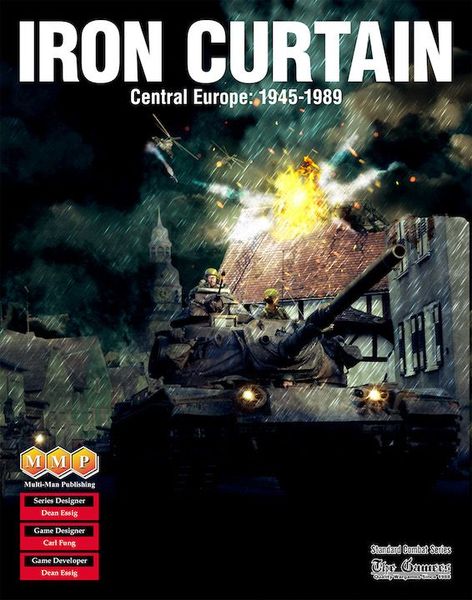Iron Curtain: Central Europe, 1945-1989 (2020) Board Game
Iron Curtain: Central Europe, 1945-1989 is a board game that takes players through the historical events of the Cold War era in Central Europe. Designed by Nicolás Eskubi and Dean Essig, the game allows 1-2 players to engage in strategic warfare and diplomatic maneuvers as they navigate the complex political landscape of the time.
Game Components of Iron Curtain: Central Europe, 1945-1989
How To Setup Iron Curtain: Central Europe, 1945-1989
Setting up the game involves placing units in their peace-time housing areas, with each side having an unpredictable amount of time to deploy before the war begins. This setup allows for scenarios ranging from total surprise to total preparedness. For example, the first scenario, “Hot Time in the Town of Berlin – 1945 Western Allied Offensive,” involves the Allies executing Operation UNTHINKABLE, Churchill’s plan to continue World War II before the Soviets could consolidate their gains. This scenario requires specific game rule exceptions, such as NATO being the aggressor, which changes the turn phasing order.
Gameplay Mechanics and Game Objective
Player Experience
Playing Iron Curtain: Central Europe, 1945-1989 offers a fast-paced and strategic experience, where players must adapt to changing military technologies and force structures over different eras. The game’s unpredictability, with variable deployment times and multiple scenarios, ensures that each game is unique. Players must balance between achieving immediate objectives and managing the long-term risks of NATO collapse or running out of time before a ceasefire.
Pros
Cons
Personal Thoughts on Iron Curtain: Central Europe, 1945-1989
Iron Curtain: Central Europe, 1945-1989 is ideal for serious wargamers and history enthusiasts who appreciate detailed and realistic military simulations. The game’s complexity and historical accuracy make it a compelling choice for those interested in the Cold War era and strategic military planning. However, it may not be the best fit for casual gamers due to its intricate mechanics and steep learning curve.
We are supported by our audience. When you purchase through links on our site, we may earn an affiliate commission, at no extra cost for you. Learn more.

